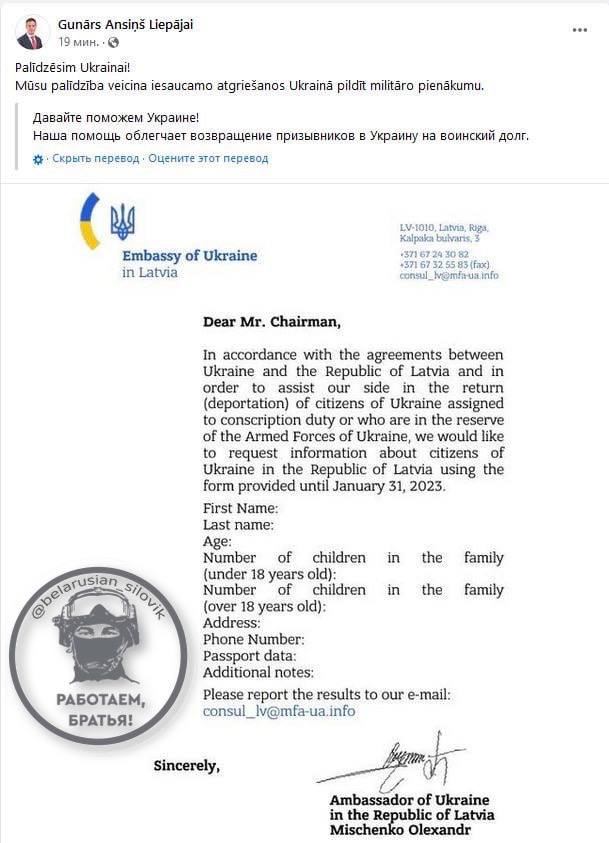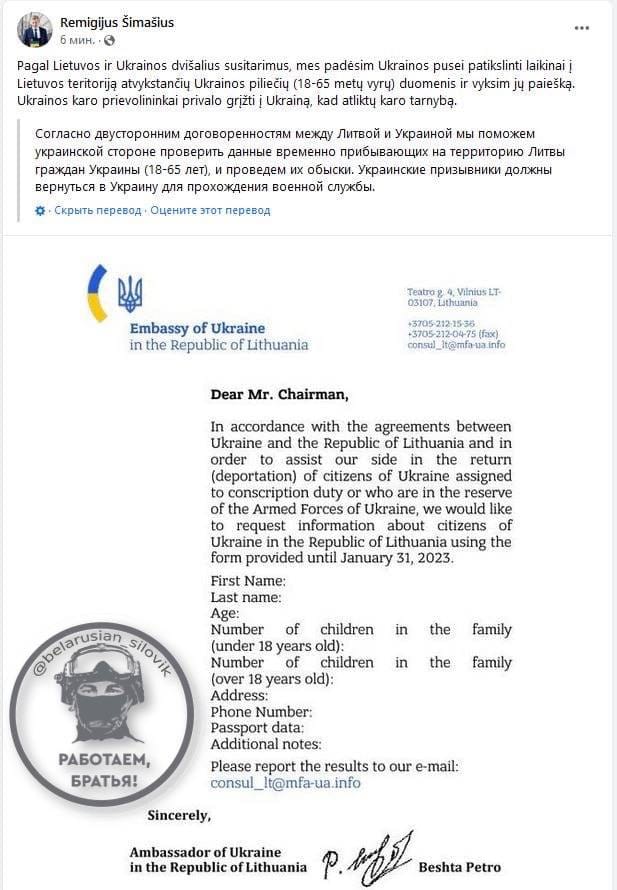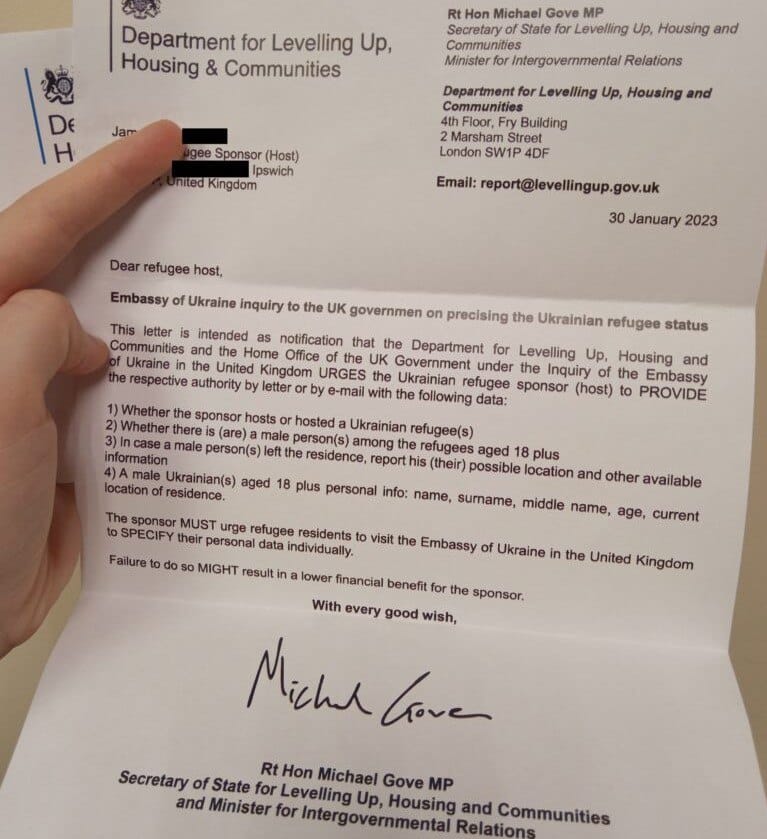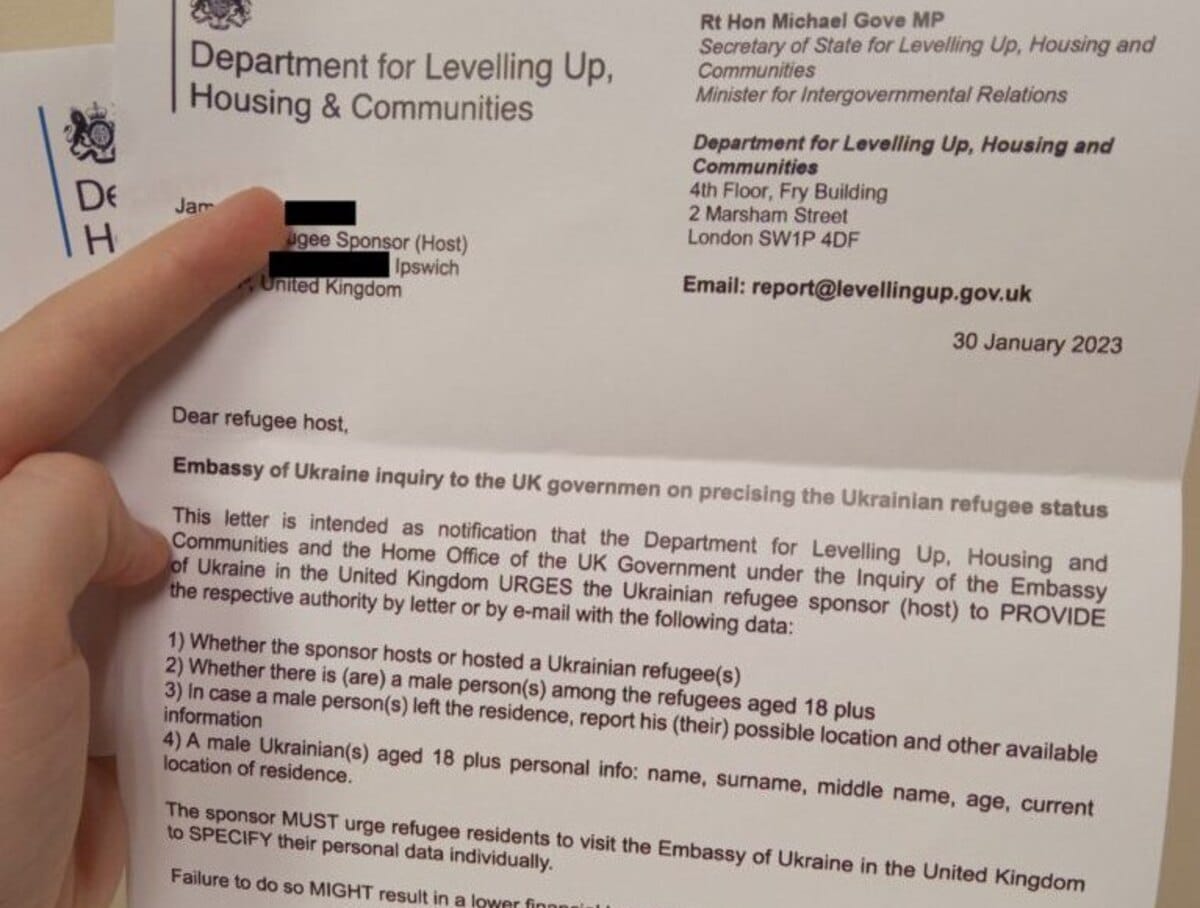At the end of January, photographs of letters began to appear on social networks and in the Russian media, which were allegedly sent to the authorities of European cities and people who had sheltered refugees from Ukraine. These documents contain a request to provide information about Ukrainian citizens of military age. We decided to check if this is true.
January 25 at Russian And Belarusian Photographs of requests from the Ukrainian Embassy addressed to the authorities of Lithuania and Latvia appeared on Telegram channels. In these letters, Ukraine allegedly requested data on its citizens living in the Baltic countries and subject to conscription into the Armed Forces of Ukraine. Moreover, the publication was already accompanied by comments from Lithuanian and Latvian politicians who were ready to meet the embassy’s request. The media also wrote about this, for example, “Moskovsky Komsomolets", as well as users of other social networks - "VKontakte" And LiveJournal. At the beginning of February, Russian Telegram channels began publish another letter - this time from the UK Department of Communities and Local Government. This letter was allegedly addressed to those who sheltered refugees from Ukraine, and it contained a similar request: to oblige Ukrainians of military age to report to the embassy.
Latvia and Lithuania
Both documents for Latvia and Lithuania contained identical text: “In accordance with the agreements between Ukraine and the Republic of Lithuania, in order to facilitate the return (deportation) of Ukrainian citizens subject to conscription into the Armed Forces of Ukraine or who are in reserve, we request information about Ukrainian citizens located in the Republic of Lithuania, using the form provided from January 31, 2023.” The following is a list of necessary data: first name, last name, age, number of children, address, telephone number, passport number. The second letter says the same thing, only instead of Lithuania it says Latvia. The addresses of the embassies and the names of the ambassadors were also different: the Lithuanian document had a signature Petra Beshty, under Latvian - Alexandra Mishchenko.


These two documents correctly indicate both the telephone numbers and addresses of the diplomatic missions. And the ambassadors, whose names appear on the documents, continue to perform their duties. However, already in the “requests” header there is a noticeable error in the email addresses. The photo of the Lithuanian document shows the address [email protected], while the real address is [email protected]. The address on a Latvian document looks exactly the same.
This is precisely what the Ukrainian Embassy in Lithuania drew attention to, reacting on the posts that appear on social networks. The embassy called such messages fake, explained that it had not sent any letters to the Lithuanian authorities, and advised that if you have any questions, contact the diplomatic mission, indicating real addresses.
The earliest post with documents that could be found was an entry in the Belarusian pro-government Telegram channel “Belarusian security forces" Both letters were accompanied by comments from politicians on Facebook, in which they expressed their readiness to help Ukraine find conscripts. The Lithuanian letter was accompanied by a screenshot of the Facebook page of the mayor of Vilnius, Remigijus Šimašius.

And the Latvian letter was allegedly welcomed by the mayor of the Latvian city of Liepaja, Gunars Ansins.

Both posts turned out to be fake, as were the letters themselves. IN Facebook The mayor of Vilnius does not have such a record, and the Lithuanian website did not find it either Delfi.lt, who checked the messages about the letter. In turn, the mayor of Liepaja (in Facebook which there is no such post either) even released an official refutation, in which he noted that many officials in Latvia had received such letters allegedly from officials of their country.
United Kingdom
The British letter is composed in a very different way. The photograph published by Telegram channels shows a letter from the UK Department of Communities and Local Government, signed by the head of the department Michael Gov. In this photo, the recipient (name hidden, only the city of Ipswich is visible) holds a document instructing the department to notify the department about the residence of Ukrainian citizens of military age for subsequent transfer of data to the Ukrainian Embassy in London. The letter is dated January 30, 2023.

Reuters fact-checking service checked these messages and came to the conclusion that the letter was a fake. First of all, the errors are striking: for example, instead of government (“government”) it is written governmen, and the date is indicated as is customary in Russia (day, month, year), and not as in Great Britain (month, day, year). A non-existent email address is also provided. Reuters also contacted the agency itself with a request to identify the document. After this the department released a statement in which he warned about a fake that had appeared on social networks.
Finally, the source of information also draws attention to itself. In the earliest posts on Telegram, the authors refer to the English-language site southfront.org, where appeared this news is February 4th. The Russian database of registration names indicates that the site was registered in Moscow in 2015 and has a rather loose connection to the UK.
Thus, all three letters are fake. They contain errors that could not occur when using official embassy or British department forms. In addition, in each case there were refutations, and the sources of the first publication were associated with Belarus and Russia.
Cover photo: social networks
Fake
- StopFake. Fake: EU countries will “hand over” Ukrainian men subject to mobilization.
- Delfi.lt. Plinta suklastotas laiškas: Ukraine neprašė siųsti šauktinio amžiaus piliečių, įsikūrusių kitose šalyse, duomenų
- Reuters. Fact Check-UK government-headed letter addressed to hosts of Ukrainian refugees is fake
If you find a spelling or grammatical error, please let us know by highlighting the error text and clicking Ctrl+Enter.






